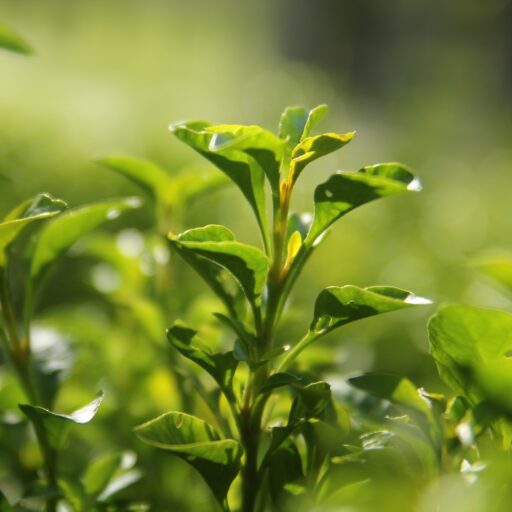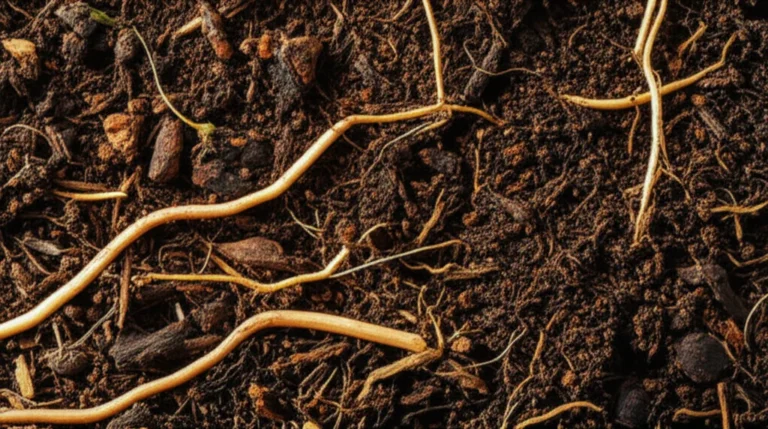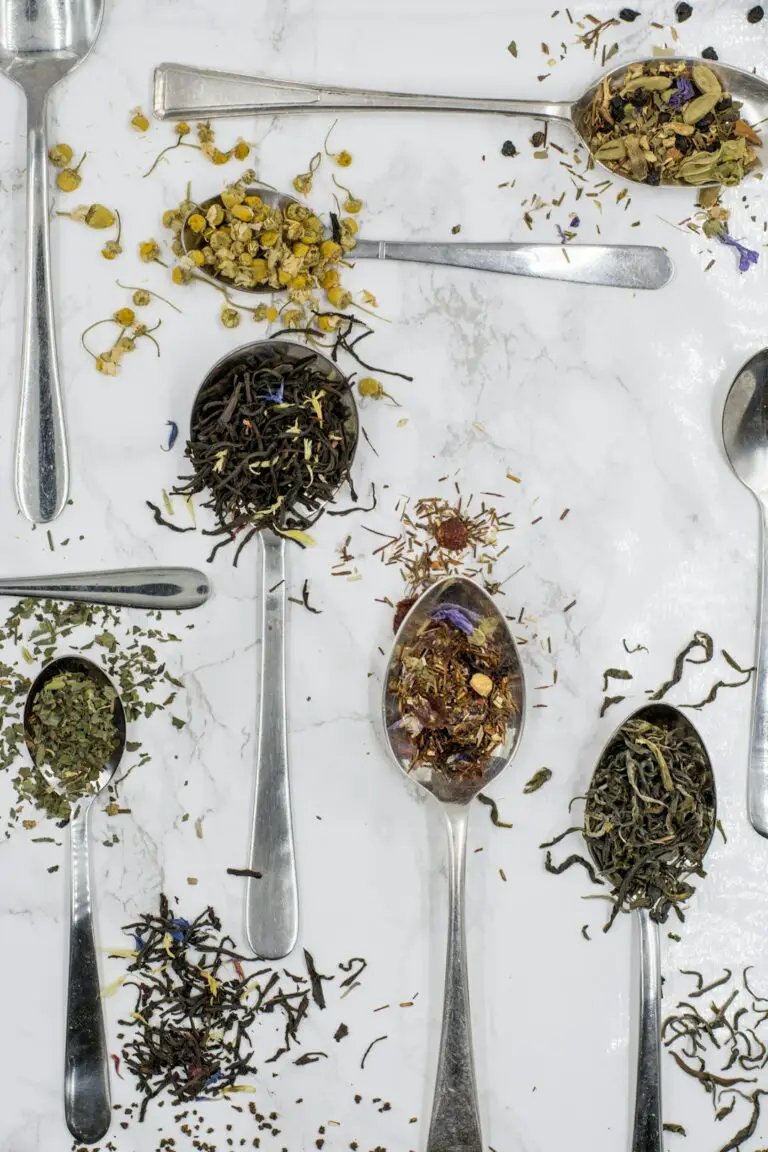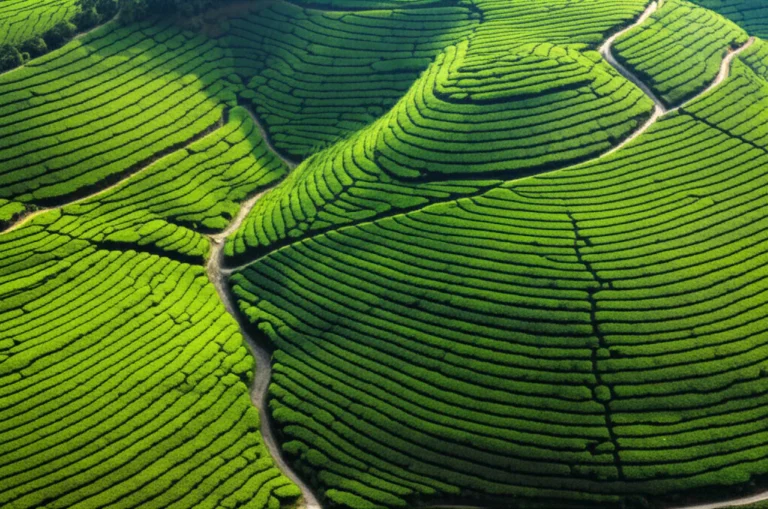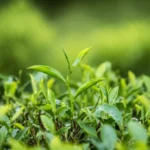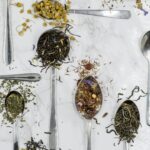Support our educational content for free when you purchase through links on our site. Learn more
Mastering Tea Plant Growing Conditions: 15 Expert Tips for Success 🍃 (2025)
Did you know that the humble tea plant, Camellia sinensis, thrives best in acidic soil with just the right balance of sunlight and moisture—conditions that can make or break your tea-growing dreams? At Growing Teas™, we’ve spent years nurturing these leafy wonders, and we’re here to spill the secrets to cultivating your own thriving tea garden. Whether you’re planting your first bush or looking to optimize your harvest, this guide covers everything from soil pH mysteries to pruning hacks and pest battles.
Stick around, because later we’ll reveal advanced techniques like shade growing for matcha-quality leaves and insider tips on turning your harvest into delicious homemade tea. Ready to turn your backyard into a tea lover’s paradise? Let’s dive in!
Key Takeaways
- Tea plants demand acidic, well-drained soil with a pH between 4.5 and 6.5 for optimal nutrient uptake and growth.
- Consistent moisture without waterlogging is crucial—overwatering in heavy soils leads to root rot.
- Ideal sunlight ranges from 4 to 6 hours daily, with morning sun and afternoon shade recommended for home growers.
- Patience pays off: expect at least 3 years before your first harvest of the prized “two leaves and a bud.”
- Pruning regularly encourages new growth and higher-quality leaves, essential for a productive tea garden.
- Organic pest management and good airflow keep your tea plants healthy and chemical-free.
- Advanced growers can experiment with shading techniques to produce premium teas like Gyokuro and Matcha.
Ready to cultivate your own tea oasis? This comprehensive guide has you covered every step of the way!
Table of Contents
- ⚡️ Quick Tips and Facts for Thriving Tea Plants
- 🌱 The Ancient Roots of Tea: A Brief History of Camellia Sinensis Cultivation
- 🌿 Unpacking the Tea Plant: Varieties and Their Preferences
- 🌍 The Ideal Climate for Tea Plants: Mimicking Nature’s Best
- 💧 The Lifeblood of Your Tea Garden: Watering Wisdom
- 🏞️ Soil Science for Superior Sips: Crafting the Perfect Growing Medium
- 🏡 From Seed to Sip: Planting Your Tea Journey
- ✂️ The Art of the Trim: Pruning for Productivity and Plant Health
- 🐛 Battling the Blight: Pest and Disease Management for Tea Plants
- 🗓️ The Waiting Game: How Long Does a Tea Plant Take to Grow?
- 🛒 Sourcing Your Starter: Where to Buy Quality Tea Plants
- 🍵 From Leaf to Cup: A Glimpse into Home Tea Processing
- ❌ Common Pitfalls and How to Avoid Them
- 🌟 Advanced Tips for the Ambitious Tea Grower
- 💡 Conclusion: Your Journey to a Thriving Tea Garden Awaits!
- 🔗 Recommended Links for the Aspiring Tea Grower
- ❓ Frequently Asked Questions (FAQ) About Growing Tea
- 📚 Reference Links & Further Reading
Here is the main content for your blog post, crafted by the expert team at “Growing Teas™”.
⚡️ Quick Tips and Facts for Thriving Tea Plants
Welcome, fellow tea enthusiast! You’ve come to the right place. Here at Growing Teas™, we’ve spent years with our hands in the dirt, coaxing the perfect leaves from our beloved Camellia sinensis plants. Before we dive deep into the art and science of tea cultivation, let’s get you started with some quick, essential tidbits. Think of this as the tea-stained cheat sheet to success!
| Factoid 🤓 | The Juicy Details |
|---|---|
| Plant Name | Camellia sinensis |
| Main Varieties | Camellia sinensis var. sinensis & Camellia sinensis var. assamica |
| Soil pH | Acidic is non-negotiable! Aim for a pH between 4.5 and 6.5. |
| Sunlight | Full sun to partial shade. They need at least 4-6 hours of good light. |
| Water Needs | Loves consistent moisture but hates wet feet. Drainage is king! |
| Hardiness Zones | Generally hardy in USDA Zones 7b-10. |
| Time to First Harvest | Patience, young grasshopper! At least 3 years before you should start plucking. |
| Ultimate Product | All “true” teas: black, green, white, oolong, and pu-erh. |
🌱 The Ancient Roots of Tea: A Brief History of Camellia Sinensis Cultivation
Every time you plant a tea bush, you’re not just gardening; you’re becoming part of a story that stretches back thousands of years. The tale of tea begins in the mountainous regions of Southwest China, where Camellia sinensis grew wild. Legend has it that in 2737 BC, the Chinese emperor Shen Nung was boiling water when leaves from a nearby tea plant drifted into his pot. He drank the infusion and, voilà, the world’s second most popular beverage (after water!) was born. From ancient monasteries to the British Empire, the journey of this single plant has shaped cultures, economies, and daily rituals across the globe. For a deeper dive into this fascinating saga, explore our History of Tea section.
🌿 Unpacking the Tea Plant: Varieties and Their Preferences
Now, let’s get personal with the plant itself. Not all Camellia sinensis are created equal! Understanding the two primary varieties is the first step to choosing the right plant for your garden and your teacup.
The Two Main Stars: Camellia Sinensis var. Sinensis vs. Assamica
Think of these as the fraternal twins of the tea world. They share the same DNA but have distinctly different personalities and preferences.
| Feature | Camellia sinensis var. sinensis | Camellia sinensis var. assamica |
|---|---|---|
| Origin | China | Assam, India |
| Leaf Size | Small, narrow leaves | Large, broad leaves |
| Plant Size | A smaller, more manageable shrub (6-10 ft if unpruned) | Can grow into a full-blown tree (up to 60 ft!) |
| Climate Preference | More cold-tolerant, thrives in cooler, mountainous regions | Prefers hot, humid, tropical climates with lots of rain |
| Best For | Delicate green and white teas | Bold, malty black teas |
Most plants you’ll find for home cultivation in North America are the sinensis variety or cold-hardy hybrids, as they are far more forgiving of temperate climates.
Beyond the Big Two: Lesser-Known Cultivars and Hybrids
The world of tea is vast! Growers have developed countless cultivars (cultivated varieties) to highlight specific flavors or adapt to different environments. You might encounter names like ‘Benihomare’ from Japan or unique hybrids developed by nurseries like Camellia Forest Nursery. These offer exciting opportunities for the adventurous grower to explore unique flavor profiles right from their own backyard.
🌍 The Ideal Climate for Tea Plants: Mimicking Nature’s Best
So, you’re ready to create a paradise for your tea plant. But what does that paradise look like? Tea plants are a bit like Goldilocks—they don’t like it too hot, too cold, too bright, or too dark. It has to be just right.
Temperature Tango: Finding the Sweet Spot for Your Tea Bush
Tea plants thrive in a temperature range of about 50°F to 85°F (10°C to 30°C). They can handle a light frost, but a hard freeze can be detrimental. As noted in the featured video, they are generally hardy in USDA Zones 7b-10, but if you’re in Zone 7, you’ll want to give them a protected spot, perhaps against a south-facing wall.
Humidity Haven: Why Moisture Matters for Lush Leaves
Originating in humid, subtropical climates, tea plants love moisture in the air. If you live in a very dry area, your plant will appreciate regular misting or being placed near other plants to create a more humid microclimate. This is especially true for indoor container growing.
Sunlight Secrets: How Much Light Does a Tea Plant Really Need?
Here’s where you’ll find some debate among growers.
- The Full Sun Camp: Many commercial growers, like Minto Island Tea Company, state that “Full sun is best for tea plants.” The team at Young Mountain Tea agrees, preferring sites with full sun to make the plants “hardy and vigorous.”
- The Partial Shade Perspective: However, the experts in the featured video recommend part shade, which is common advice for other types of Camellias. The folks at LoveTheGarden suggest that partial shade is acceptable, especially in very hot climates.
Our Take at Growing Teas™: What gives? The difference often comes down to water. If your plant is in full sun, especially in a hot climate, its water needs will be much higher. For the home gardener, we recommend a spot with morning sun and afternoon shade. This provides enough light for vigorous growth without the stress of scorching afternoon heat.
💧 The Lifeblood of Your Tea Garden: Watering Wisdom
If there’s one mantra to chant for your tea plant, it’s this: “They love water, but hate sitting in it.” This fantastic line from Young Mountain Tea perfectly captures the essence of watering Camellia sinensis.
Rain, Rain, Don’t Go Away: Optimal Water Requirements
Commercially, tea plants require a significant amount of rainfall, at least 40-60 inches per year. For the home grower, this translates to consistent moisture.
- Young Plants (First 2 Years): These babies are thirsty as they establish their roots. Water them deeply 2-3 times a week during the summer, ensuring the entire root ball gets a good soak.
- Established Plants: Once mature, they are more drought-tolerant but will produce the best flushes (new growth for harvesting) with regular watering during dry spells.
Drainage Dilemmas: Avoiding Waterlogged Roots
This is the other side of the watering coin and it’s CRITICAL. Tea plants are highly susceptible to root rot if their roots sit in water. Poor drainage is a death sentence!
- ✅ Do: Plant in sandy or loamy soil, on a slope, or in a raised bed.
- ❌ Don’t: Plant in heavy, compacted clay soil without amending it heavily.
If your soil is heavy, you’ll need to improve its structure. Which brings us to our next, and perhaps most important, topic…
🏞️ Soil Science for Superior Sips: Crafting the Perfect Growing Medium
You can get the light and water right, but if your soil is wrong, your tea-growing dreams will crumble. The secret to happy Camellia sinensis is all in the soil. For a truly comprehensive guide, you must read our article on What Kind of Soil Is Best for Growing Tea? 🌱 Discover the Secrets!.
The pH Puzzle: Acidity is Key for Camellia Sinensis
This is the big one. Tea plants are acid-loving. They absolutely require acidic soil to absorb nutrients properly. If your soil is alkaline, the leaves will turn yellow and the plant will fail to thrive.
- Young Mountain Tea suggests an ideal pH of 4.5-6.
- LoveTheGarden recommends a range of 5.5 to 6.5.
- Minto Island Tea Company aims for 5.0 to 6.0.
The consensus is clear: keep it below 6.5. We recommend getting a simple soil pH test kit. If your soil is too alkaline, you can amend it with elemental sulfur, sphagnum peat moss, or fertilizers formulated for acid-loving plants like azaleas and rhododendrons.
Texture Talk: Loamy, Well-Drained, and Nutrient-Rich
As we’ve stressed, drainage is paramount. The ideal soil is a sandy loam rich in organic matter. If you have heavy clay, as mentioned in the featured video, you should plant your tea bush in a mound or raised bed and amend the soil heavily with well-aged compost and grit to improve its structure and drainage.
Fertilization Finesse: Feeding Your Tea Plants for Growth
Feed your plants during the growing season (spring and summer) to encourage lush new leaves.
- Use a balanced liquid fertilizer formulated for acid-loving plants.
- Brands like Miracle-Gro® Miracid® or organic options like Espoma Holly-tone® are excellent choices.
- Always follow the package directions to avoid over-fertilizing.
🏡 From Seed to Sip: Planting Your Tea Journey
With your site prepped, it’s time for the main event! Planting your tea bush is, as Young Mountain Tea puts it, a familiar process “if you’ve ever planted a shrub.”
Starting Strong: Propagating Tea Plants from Seed or Cuttings
- From Seed: This is the path of patience! Tea seeds need to be fresh and can take months to germinate. It’s a rewarding process, but not for the faint of heart.
- From Cuttings: A faster way to get a plant that’s true to its parent. This is how many commercial growers propagate their stock.
- From a Nursery Plant: The easiest and most recommended method for beginners. Start with a healthy, 1-2 year old plant.
Spacing Sensibly: How Far Apart Should Tea Plants Be?
How much room does your tea bush need? It depends on your goal.
- For a Hedge/Production: If you dream of a tea hedge, plant them 1.5 to 3 feet apart.
- For a Specimen Shrub: For a single, beautiful bush in your garden, give it more room to breathe—at least 5 feet apart.
Container Cultivation: Growing Tea Plants Indoors or on Patios
Don’t have a garden? No problem! Tea plants do wonderfully in containers.
- ✅ Choose a large pot with excellent drainage holes.
- ✅ Use a high-quality potting mix formulated for acid-loving plants.
- ✅ Be prepared to water more frequently, as pots dry out faster than the ground.
- ✅ Bring your plant indoors if temperatures are expected to drop below freezing for an extended period.
✂️ The Art of the Trim: Pruning for Productivity and Plant Health
Pruning isn’t just about keeping your plant tidy; it’s about encouraging it to produce the tender new leaves that make the best tea. As the experts say, “We suggest pruning frequently to encourage branching and numerous growing tips—optimal tea plucking conditions!”
Formative Pruning: Shaping Young Tea Bushes
In the first couple of years, your goal is to encourage a strong, bushy framework. Prune the main, dominant stems to encourage the plant to send out side shoots, creating a wide “plucking table” for easy harvesting.
Maintenance Pruning: Encouraging New Flushes
Once your plant is established, an annual prune in late winter or early spring (before new growth starts) will keep it vigorous and productive. This stimulates the plant to produce “flushes” of new growth, which is exactly what you’ll be harvesting. This is a key part of successful Green Tea Cultivation.
🐛 Battling the Blight: Pest and Disease Management for Tea Plants
The good news is that Camellia sinensis is a pretty hardy plant. However, like any garden resident, it can fall prey to a few pests and diseases.
Common Pests: From Aphids to Mites
The most common culprit you might encounter is tea scale. As mentioned in the featured video, this is a common issue for camellias. These are small, sap-sucking insects that appear as white or brown bumps on the undersides of leaves. You might also see aphids or spider mites.
Fungal Foes: Identifying and Treating Tea Plant Diseases
Fungal issues like root rot (from poor drainage) or leaf spot can occur, especially in overly damp or humid conditions with poor air circulation.
Organic Solutions: Keeping Your Tea Chemical-Free
Since you plan on drinking the leaves, we strongly advocate for organic pest control!
- Horticultural Oil/Neem Oil: An excellent, safe option for controlling scale, aphids, and mites. Apply according to package directions.
- Good Airflow: Prune to open up the plant and ensure good air circulation to prevent fungal diseases.
- Healthy Soil: The best defense is a good offense! A healthy, well-fed plant in the correct soil is much less susceptible to pests and diseases.
🗓️ The Waiting Game: How Long Does a Tea Plant Take to Grow?
This is the question that requires the most patience. You’ve planted your bush, you’re caring for it… when do you get to drink the tea?!
First Flush Fantasies: When to Expect Your First Harvest
Do not harvest any leaves for the first three years. We know, it’s tough! But allowing the plant to focus all its energy on establishing a strong root system and framework is crucial for its long-term health and productivity. A well-cared-for tea bush can live for 50 years or even longer, so your patience will be rewarded for decades to come.
What About Tea Flowers? Their Role and Purpose
Sometime in the fall, you’ll likely see small, white, fragrant flowers appear. What should you do?
- For Ornamental Beauty: The flowers are lovely and resemble their more flamboyant ornamental camellia cousins. Leaving them on enhances the plant’s beauty.
- For Maximum Leaf Production: Commercial growers pinch off the flower buds as they appear. This directs the plant’s energy away from making seeds and back into producing flavorful leaves.
Our Advice? For the first few years, let it flower! Enjoy the show. Once you start harvesting seriously, you may want to pinch off the buds to improve your tea’s flavor complexity. You can even brew the blossoms for a sweet, relaxing beverage.
🛒 Sourcing Your Starter: Where to Buy Quality Tea Plants
Ready to buy your first tea plant? It’s crucial to source from a reputable grower to ensure you get a healthy, correctly identified plant.
Reputable Nurseries and Online Retailers
Based on recommendations from fellow growers and our own experience, here are some excellent places to start your search. Many of these were also recommended by Young Mountain Tea.
- Camellia Forest Nursery: A top-tier nursery specializing in camellias, including a wide variety of Camellia sinensis cultivars.
- Fast Growing Trees: A large online nursery that often carries tea plants.
- Minto Island Tea Company: If you’re in the Pacific Northwest, you can buy directly from these experienced tea growers.
- Logee’s: A fantastic source for rare and tropical plants, they frequently have tea plants available.
👉 Shop Tea Plants on: Amazon | Etsy
What to Look for in a Healthy Tea Plant
- Lush, glossy green leaves.
- No signs of yellowing (which could indicate a pH issue).
- Check the undersides of leaves for pests like tea scale.
- A strong root system (but not root-bound in its pot).
🍵 From Leaf to Cup: A Glimpse into Home Tea Processing
Growing the plant is only half the fun! The magic of turning one plant into hundreds of different types of tea lies in the processing. While it’s a deep topic, the basics are surprisingly accessible for the home grower.
Harvesting the “Two Leaves and a Bud”
The finest teas are made from the “flush”—the tender, unopened leaf bud and the two youngest leaves just below it. You’ll gently pluck this from the tips of the branches during the growing season.
Basic Processing Steps: Wilting, Rolling, Oxidizing, Drying
The fate of your tea—whether it becomes green, oolong, or black—is decided here.
- Wilting/Withering: Leaves are left to soften and lose some moisture.
- Rolling/Shaping: The leaves are bruised or rolled to break down cell walls and release enzymes.
- Oxidation: This is the key step! The leaves are left to react with oxygen. A short oxidation results in oolong, while a full oxidation creates black tea. Green tea skips this step entirely.
- Drying (Firing): The leaves are heated to stop the oxidation process and dry them for storage.
It’s a fascinating process that turns gardening into a culinary art. It’s the ultimate in DIY Tea Blending!
❌ Common Pitfalls and How to Avoid Them
We’ve seen it all! Here are the most common mistakes new tea growers make. Avoid these, and you’ll be miles ahead.
Overwatering Woes and Underfeeding Fails
- ❌ The Mistake: Loving your plant to death with too much water in poorly drained soil.
- ✅ The Fix: Prioritize drainage above all else. Water deeply, but let the soil dry out slightly between waterings. Remember to feed during the growing season!
Ignoring pH: The Silent Killer
- ❌ The Mistake: Planting in neutral or alkaline soil and wondering why your plant looks sick and yellow.
- ✅ The Fix: Test your soil! It’s an easy, inexpensive step that saves so much heartache. Amend your soil to be acidic before you plant.
🌟 Advanced Tips for the Ambitious Tea Grower
Feeling confident? Ready to take your tea cultivation to the next level? Let’s talk terroir.
Shade Growing: Crafting Gyokuro and Matcha
For the truly dedicated, you can emulate the Japanese techniques for producing high-end teas like Gyokuro and Matcha. This involves shading the tea plants for several weeks before harvest. This reduces photosynthesis, which increases chlorophyll and L-theanine levels, resulting in a sweeter, more savory (umami) flavor. This is an advanced technique in Green Tea Cultivation that can yield incredible results.
Experimenting with Terroir: Your Unique Tea Flavor
Terroir is a wonderful French term that describes how a region’s specific climate, soil, and terrain affect the taste of a crop. Your backyard has its own unique terroir! The specific mineral content of your soil, the amount of sun it gets, the rainfall—all these factors will create a tea that is uniquely yours. Don’t be afraid to experiment. The tea you grow will have a “taste of place” that you can’t buy in any store, and that’s deeply connected to the Health Benefits of Tea.
💡 Conclusion: Your Journey to a Thriving Tea Garden Awaits!
Congratulations! You’ve just unlocked the secrets to growing your very own tea plant, from understanding the perfect soil acidity to mastering watering and pruning techniques. Whether you’re dreaming of a lush tea hedge or a single container-grown specimen, the path to your personal tea harvest is clearer than ever.
Remember, tea growing is a marathon, not a sprint. The first flush of leaves won’t come until your plant is about three years old, but the wait is worth it. Your patience will be rewarded with fresh, homegrown leaves that can be transformed into your favorite green, black, or oolong teas. Plus, the joy of nurturing a plant that has shaped cultures for millennia? Priceless.
If you’re ready to take the plunge, start by sourcing a healthy tea plant from trusted nurseries like Camellia Forest Nursery or Minto Island Tea Company. Prepare your soil carefully, keep an eye on moisture and sunlight, and don’t forget to prune regularly to encourage those delicious new flushes.
We hope this guide has answered your burning questions and sparked your enthusiasm. Now, go forth and cultivate your own tea paradise! 🍃🍵
🔗 Recommended Links for the Aspiring Tea Grower
Ready to shop or read more? Here are some top picks from our team:
-
Camellia Forest Nursery Tea Plants:
Amazon Search: Camellia sinensis plant | Camellia Forest Nursery Official -
Minto Island Tea Company Plants:
Minto Island Tea Official Website -
Miracle-Gro® Miracid® Acid-Loving Plant Food:
Amazon -
Espoma Holly-tone® Organic Fertilizer:
Amazon -
Books to Deepen Your Tea Growing Knowledge:
❓ Frequently Asked Questions (FAQ) About Growing Tea
What is the ideal climate for growing tea plants?
Tea plants thrive best in humid, subtropical climates with temperatures ranging from 50°F to 85°F (10°C to 30°C). They require at least 40 inches of rainfall annually to maintain consistent soil moisture but must be planted in well-drained soil to prevent root rot. Frost can damage or kill tea plants, so protection from freezing temperatures is essential. For gardeners in cooler zones, container growing with winter protection is a viable alternative.
How much sunlight do tea plants need to thrive?
Tea plants prefer full sun to partial shade, ideally receiving 4 to 6 hours of sunlight daily. While commercial growers often recommend full sun for vigorous growth, partial shade—especially in hot climates—helps prevent leaf scorch and reduces water stress. For home growers, a spot with morning sun and afternoon shade strikes the perfect balance between energy for photosynthesis and protection from heat.
What type of soil is best for tea plant cultivation?
Tea plants demand acidic, well-drained soils with a pH between 4.5 and 6.5. The soil should be loamy and rich in organic matter to provide nutrients and good moisture retention without waterlogging. Heavy clay soils must be amended with compost and grit or planted in raised beds to improve drainage. Testing your soil pH before planting is crucial; if it’s too alkaline, amendments like elemental sulfur or peat moss can help acidify it.
How often should tea plants be watered during growth?
Young tea plants require deep watering 2-3 times per week during the growing season to establish roots, ensuring the entire root ball is soaked. Established plants are more drought-tolerant but benefit from regular watering during dry spells to encourage new flushes of growth. Always allow the soil to dry slightly between waterings to avoid root rot, and prioritize excellent drainage.
How long does it take before I can harvest tea leaves?
You should wait at least three years before harvesting leaves to allow your tea plant to mature and develop a strong root system. Harvesting too early can stunt growth and reduce long-term productivity. After this period, you can begin plucking the tender “two leaves and a bud” from new flushes for processing.
Can I grow tea plants indoors or in containers?
Absolutely! Tea plants adapt well to container growing, especially in cooler climates. Use a large pot with excellent drainage and acidic potting mix. Indoor plants need bright, indirect light and regular watering. Bring them indoors during freezing weather to protect from frost.
📚 Reference Links & Further Reading
- Minto Island Tea Company – Grow Tea
- Young Mountain Tea – Grow Your Own Tea Plant
- LoveTheGarden – How to Grow Tea
- Camellia Forest Nursery
- Miracle-Gro® Miracid® Acid-Loving Plant Food
- Espoma Holly-tone® Organic Fertilizer
- USDA Plant Hardiness Zones
- Soil pH Testing Guide – University of California Agriculture & Natural Resources
We hope this comprehensive guide inspires you to cultivate your own tea garden with confidence and joy. Remember, every great cup of tea starts with a single leaf—and a little love from you! 🍃🍵
